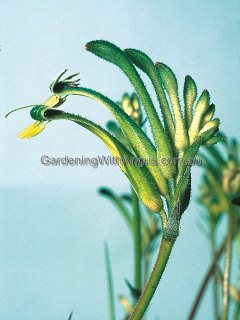Array
(
[0] => Array
(
[id] => 432
[is_published] => 1
[websiteID] => 5
[url] => /gardening/plant-finder/plant-index.php
[page_status] => Published
[number_of_ads] => 4
[can_use_editor] => 0
[last_modified_date] => 2013-10-13 00:00:00
[last_modified_by] => Alan
[checked_for_duplicate_content] =>
[title] => Plant index (not used)
[heading] => Plant index (not used)
[meta_description] => (not used)
[article_category_1] => Gardening
[article_category_2] => Landscaping
[article_category_3] =>
[article_category_4] =>
[article_category_5] =>
[business_category_1] => Landscaper
[business_category_2] => Garden Maintenance
[business_category_3] => Garden Supplies
[business_category_4] =>
[business_category_5] =>
[number_of_google_mrecs] => 0
[show_google_ad_bottom_of_page] => 1
[show_get_quotes_top_of_page] => 1
[show_get_quotes_rhs_of_page] => 0
[show_directory_search_widget] => 0
[show_trending_content_widget] => 0
[show_facebook_widget] => 1
[show_further_reading_section] => 0
[show_sponsors_section] => 0
[show_top_article_ad] => 1
)
[1] => Array
(
[id] => 191
[is_published] => 1
[websiteID] => 5
[url] => /gardening/best-natives-for-pots-and-small-gardens.php
[page_status] => Published
[number_of_ads] => 5
[can_use_editor] => 1
[last_modified_date] => 2013-09-16 00:00:00
[last_modified_by] => Alan
[checked_for_duplicate_content] =>
[title] => Best Australian natives for pots & small gardens
[heading] => Best Australian natives for pots & small gardens
[meta_description] => The trend towards smaller gardens has inspired the plant lovers in the nursery industry to respond with an ever-increasing range of Australian plants that will delight those who want to attract birds and butterflies and bring a little bit of the bush onto their balconies. From banksias to bottlebrush there are plants that will add colour and texture to provide year round interest.
[article_category_1] => Gardening
[article_category_2] =>
[article_category_3] =>
[article_category_4] =>
[article_category_5] =>
[business_category_1] => Landscaper
[business_category_2] => Nursery
[business_category_3] => Garden Designer
[business_category_4] => Landscape Architect
[business_category_5] =>
[number_of_google_mrecs] =>
[show_google_ad_bottom_of_page] =>
[show_get_quotes_top_of_page] =>
[show_get_quotes_rhs_of_page] =>
[show_directory_search_widget] =>
[show_trending_content_widget] =>
[show_facebook_widget] =>
[show_further_reading_section] => 1
[show_sponsors_section] => 0
[show_top_article_ad] => 1
)
[2] => Array
(
[id] => 151
[is_published] => 1
[websiteID] => 5
[url] => /landscaping/fertilisers.php
[page_status] => Published
[number_of_ads] => 2
[can_use_editor] => 1
[last_modified_date] => 2013-09-10 00:00:00
[last_modified_by] => Alan
[checked_for_duplicate_content] =>
[title] => Fertilisers
[heading] => Fertilisers
[meta_description] => Learn all about fertilisers, the different varieties and their applications.
[article_category_1] => Landscaping
[article_category_2] =>
[article_category_3] =>
[article_category_4] =>
[article_category_5] =>
[business_category_1] => Landscaper
[business_category_2] => Nursery
[business_category_3] => Garden Designer
[business_category_4] => Landscape Architect
[business_category_5] =>
[number_of_google_mrecs] => 1
[show_google_ad_bottom_of_page] => 1
[show_get_quotes_top_of_page] => 1
[show_get_quotes_rhs_of_page] => 1
[show_directory_search_widget] => 1
[show_trending_content_widget] => 1
[show_facebook_widget] => 1
[show_further_reading_section] => 1
[show_sponsors_section] => 0
[show_top_article_ad] => 1
)
[3] => Array
(
[id] => 197
[is_published] => 1
[websiteID] => 5
[url] => /gardening/grevilleas.php
[page_status] => Published
[number_of_ads] => 5
[can_use_editor] => 1
[last_modified_date] => 2013-09-16 00:00:00
[last_modified_by] => Alan
[checked_for_duplicate_content] =>
[title] => Grevilleas
[heading] => Grevilleas
[meta_description] => Learn all about grevilleas from native plant expert Angus Stewart.
[article_category_1] => Gardening
[article_category_2] =>
[article_category_3] =>
[article_category_4] =>
[article_category_5] =>
[business_category_1] => Landscaper
[business_category_2] => Nursery
[business_category_3] => Garden Designer
[business_category_4] => Landscape Architect
[business_category_5] =>
[number_of_google_mrecs] =>
[show_google_ad_bottom_of_page] =>
[show_get_quotes_top_of_page] =>
[show_get_quotes_rhs_of_page] =>
[show_directory_search_widget] =>
[show_trending_content_widget] =>
[show_facebook_widget] =>
[show_further_reading_section] => 1
[show_sponsors_section] => 0
[show_top_article_ad] => 1
)
)
Helpful articles
Plant index (not used). (not used).
Best Australian natives for pots & small gardens. The trend towards smaller gardens has inspired the plant lovers in the nursery industry to respond with an ever-increasing range of Australian plants that will delight those who want to attract birds and butterflies and bring a little bit of the bush onto their balconies. From banksias to bottlebrush there are plants that will add colour and texture to provide year round interest.
Fertilisers. Learn all about fertilisers, the different varieties and their applications.
Grevilleas. Learn all about grevilleas from native plant expert Angus Stewart.
Plant description
Anigozanthos 'Green Dragon' is a clumping herbaceous perennial with lovely emerald green and cream paw shaped flowers. It has a dwarf habit with unbranched stems. A short-lived garden plant but outstanding in a pot. Grow in a sunny spot in a well drained soil, and fertilise in spring with a good slow release fertiliser. A sprinkle of snail pellets will control slugs and snails, which love the new growth.
Further reading: Growing Kangaroo Paws (an article written by native plant expert Angus Stewart).
Additional plant information
Flowers
Flower colour: green
Flowering season: spring
Plant size
Maximum height: 0.6 metres
Minimum height: 0.6 metres
Maximum width: 0.5 metres
Minimum width: 0.5 metres
Sunlight, frost & salt tolerance
This plant will tolerate full sunlight.
Light frost tolerance.
Plant is salt tolerant.
Fauna attracting?
Yes. Attracts: birds.
Climate
This plant species will grow in the following climates: cool, temperate.
Soil types & conditions
Loam: moist, well-drained.
Clay: not suitable.
Sand: moist, well-drained.
Diseases
Ink spot disease
Pests
Slugs and snails
Miscellaneous information
Native to: Australia.
Planting season: Any.
Types of fertiliser: Good slow release fertiliser.
Find a nursery
Search for another plant

